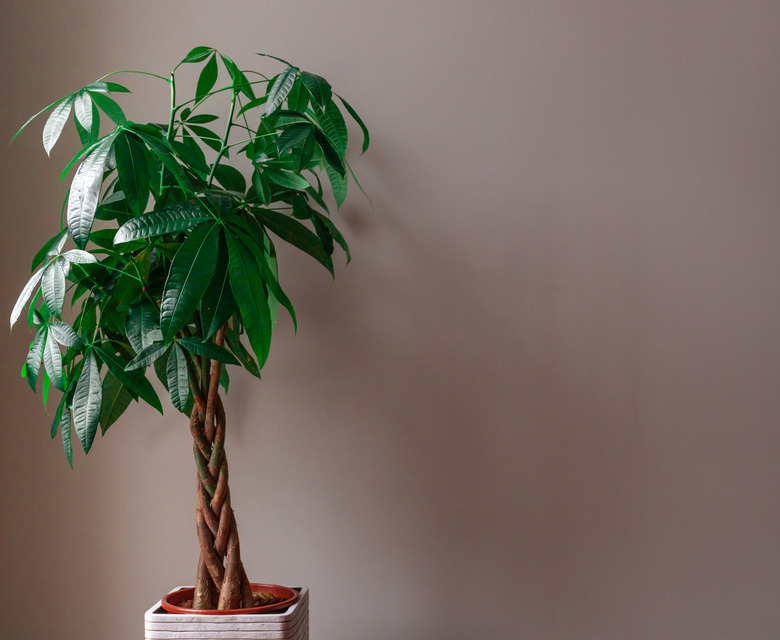How To Stop A Money Tree From Dying
If you're wondering how to stop a money tree (Pachira aquatica, USDA zones 10-12) from dying, then your lucky plant might not be feeling so lucky or prosperous. Under ideal growing conditions, these beauties, which are often sold with braided trunks, produce beautiful leaves atop the trunk. If your money tree care routine is coming up short, you might notice yellowing, droopy leaves or other signs that the plant is dying. Figuring out the problem immediately and correcting the issue can help you save your money tree.
Signs of Root Rot
Signs of Root Rot
Money trees need plenty of water, but watering them too much can cause root rot. When the soil stays too saturated, the roots start to rot and die. Signs of root rot fungus include wilting, yellow or brown leaves, slowed growth and a mildew smell.
Check for root rot by carefully removing the money plant from its container and inspecting the roots. White, firm roots are healthy and show that your plant doesn't have root rot. If any roots are black or brown or feel mushy, you're likely seeing root rot.
Treating and Avoiding Root Rot
Treating and Avoiding Root Rot
Cut away the rotten roots with a sharp knife to try to save the plant. Use fresh potting soil since pathogens can remain in the old soil. Apply a fungicide to the healthy roots in case some of the root rot fungus remains.
To avoid root rot, choose a properly sized pot that's not too big. The pot also needs proper drainage holes and a saucer to catch the excess water. Water the plant deeply but infrequently, emptying the excess water from the saucer. A money tree usually only needs to be watered once per week. Let the soil dry slightly before you water it again.
You can tell you need to adjust your watering routine by looking at the plant. If you see wrinkled, curled leaves, it may mean your money plant needs more water. Droopy yellow leaves can be a sign of too much water. As soon as you notice drooping or yellowing leaves, cut back on watering to prevent root rot.
Money Tree Location
Money Tree Location
The amount and type of sunlight can affect your money tree's growth. A money tree does best with a mix of sunlight and shade each day. Long periods of direct sunlight can burn the leaves, resulting in a yellow appearance, which can make it look like the money tree is dying.
If sunlight is an issue, move your money plant to a more suitable location. Indoors, choose a spot with bright, indirect sunlight. Rotate your indoor plant occasionally to encourage straight, even growth.
If you put your money tree outdoors during warmer weather, don't forget to bring it indoors when it cools down. Your money plant needs to come indoors once the outside temperature gets below 50 degrees Fahrenheit. If you leave it outside during colder weather, bring it inside as soon as you notice it. The plant might bounce back if it wasn't severely damaged by the colder temperatures.
Money Plant Pest Problems
Money Plant Pest Problems
Some pests, including aphids and mealybugs, can attack money trees and threaten the health of the plants. Whiteflies or aphids sometimes bother money tree plants. Spray a little horticultural soap onto the leaves to eliminate the pests. Rinse the leaves after applying the solution. Spider mites and mealybugs can also affect money plants.
Neem oil applied according to the package instructions can protect your money tree plant. Use it as a preventive measure or to treat a pest infestation.
